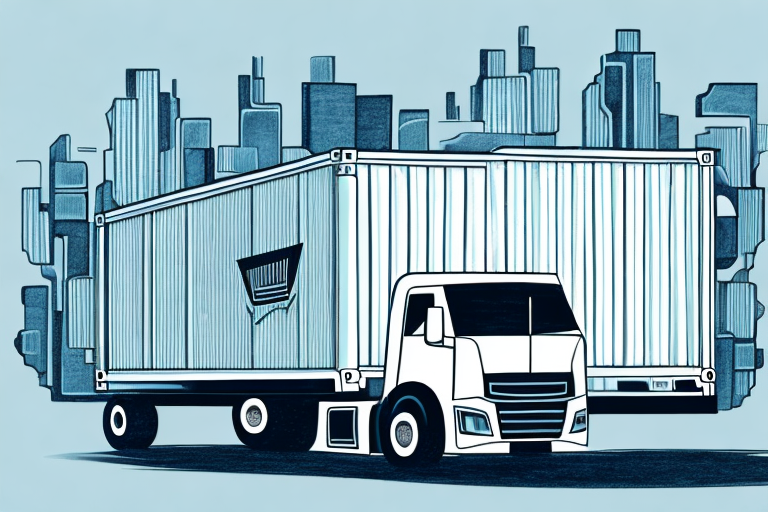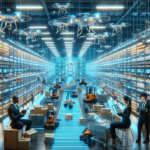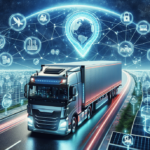Impact of Emerging Technologies on Transportation and Logistics
The transportation and logistics industry has undergone significant transformations driven by technological advancements and globalization. Businesses must continuously adapt to these changes to maintain a competitive edge. This section delves into the latest technological trends reshaping the industry.
Internet of Things (IoT) Integration
The Internet of Things (IoT) has revolutionized supply chain management by enabling real-time tracking of goods. IoT devices, such as sensors and GPS trackers, provide critical data on the location, temperature, and condition of shipments, allowing for enhanced decision-making in routing and inventory management. According to a McKinsey report, IoT integration can lead to a 10-15% increase in operational efficiency.
Autonomous Vehicles and Drones
Autonomous vehicles, including self-driving trucks and drones, are being developed to streamline delivery processes. Companies like Tesla and Amazon are at the forefront of testing these technologies. Autonomous systems promise to reduce labor costs and delivery times while increasing safety. However, challenges such as regulatory hurdles and the need for advanced infrastructure remain.
Innovations Enhancing Efficiency in Logistics
Innovation is key to improving efficiency within transportation and logistics. Several cutting-edge technologies are being adopted to optimize various aspects of the supply chain.
Blockchain Technology
Blockchain offers a secure and transparent method for tracking shipments and transactions. By providing an immutable ledger, blockchain reduces the risk of fraud and errors. A study by IBM highlights that blockchain can enhance transparency and trust in supply chains, leading to more reliable operations.
Artificial Intelligence (AI) and Machine Learning
AI and machine learning are pivotal in optimizing delivery routes, predicting demand, and managing inventory levels. These technologies enable businesses to make data-driven decisions, resulting in cost savings and improved service quality. Additionally, AI-powered chatbots enhance customer support by providing real-time assistance.
Big Data Utilization in Supply Chain Optimization
The advent of big data analytics has provided unprecedented insights into supply chain operations. By leveraging vast amounts of data, businesses can identify inefficiencies and implement strategic improvements.
Demand Forecasting and Inventory Management
Big data analytics facilitates accurate demand forecasting, enabling businesses to maintain optimal inventory levels. This minimizes waste and reduces holding costs. According to a Forbes article, companies using big data for inventory management report a 20% reduction in excess stock.
Real-Time Performance Monitoring
Analytics tools allow for real-time monitoring of supply chain performance. Businesses can swiftly identify and address issues, ensuring smooth operations and high customer satisfaction. Implementing these tools leads to enhanced visibility and control over the entire supply chain process.
Sustainability Initiatives in Transportation and Logistics
Sustainability has become a critical focus for the transportation and logistics industry. Companies are adopting eco-friendly practices to reduce their environmental impact and meet regulatory requirements.
Green Logistics Practices
Green logistics involves utilizing sustainable fuels, minimizing waste, and optimizing delivery routes to lower emissions. Adoption of electric and hybrid vehicles is on the rise, contributing to a significant reduction in the carbon footprint. The ISO 14001 standard provides guidelines for implementing effective environmental management systems.
Alternative Transportation Modes
Exploring alternative transportation methods, such as electric bicycles and drones for last-mile delivery, helps decrease emissions and alleviate urban traffic congestion. These sustainable options not only benefit the environment but also enhance delivery efficiency in densely populated areas.
Challenges and Workforce Development in Logistics
Despite advancements, the transportation and logistics industry faces several challenges that require strategic solutions.
Workforce Shortages and Skills Gap
The industry is experiencing a shortage of skilled professionals, particularly in areas like data analytics and logistics management. Addressing this gap through targeted recruitment and training programs is essential for sustaining growth and innovation.
Cost Reduction Pressures
Businesses are under constant pressure to reduce operational costs while maintaining high service quality. Effective resource management and process optimization are critical to achieving cost efficiency without compromising performance.
Environmental Regulations and Compliance
Increasing environmental regulations necessitate the adoption of sustainable practices. Compliance with these regulations requires continuous monitoring and adaptation of logistics strategies to meet evolving standards.
Future Outlook and Strategic Predictions
The future of transportation and logistics is poised for further transformation as technology continues to advance and consumer expectations evolve.
Expansion of E-commerce and Its Impact
The growth of e-commerce is driving demand for faster and more reliable delivery services. Businesses must innovate to offer same-day and next-day delivery options, leveraging technologies like AI and autonomous vehicles to meet consumer expectations.
Globalization and Cross-Border Logistics
As businesses expand globally, efficient cross-border logistics become increasingly important. Navigating complex regulations, cultural differences, and varying market demands requires robust and adaptable supply chain strategies.
Adoption of Advanced Analytics
Advanced analytics will play a pivotal role in optimizing supply chain operations. Predictive analytics and real-time data processing will enable businesses to proactively manage challenges and seize opportunities in the logistics landscape.
Conclusion
The transportation and logistics industry is at the forefront of technological innovation and sustainability efforts. Embracing emerging technologies, optimizing supply chain processes, and addressing workforce challenges are essential for businesses to thrive in this dynamic environment. By focusing on these key areas, companies can enhance efficiency, reduce costs, and deliver superior value to customers in an increasingly competitive market.




















